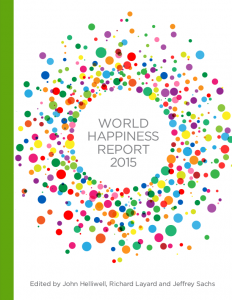24-04-2015, Netherlands. Bhutan's development philosophy of so called ' Gross National Happiness' is slipping backward.
When His Majesty the King Jigme Singey Wangchuk explored the possibilities to garner Kuwaiti fund and make diplomatic ties with the Muslim countries in early 1980's, the Indian congress in power under Rajiv Ghandhi was not happy on this drive of the monarch. In an interview in New Delhi, the king was questioned of the low Gross Domestic Product index in Bhutan. A witty answer was given by the king - 'as long as people are happy with whatever resources they have what is the use of high GDP index?. We pursue instead the 'Gross National Happiness'. That is the beginning of this eye catching word, that gradually the UN also got succumbed into its jugglery.
Now 20th April is observed as the International Day of Happiness.
The expansion of this concocted theory continued among the worlds' influential people and organisations. In 2006 Adrian White, analytic social psychologist of the University of Leicester, published his first World Map of Happiness. His findings placed Bhutan as the 8th happiest country in the world and first in Asia.
Later, in the span of nine years in 2015, Bhutan is found in the 71 positions in the list of world’s happiest country, a reversing issue of that 'Gross National Happiness' drive.
Their contemporaries, John F. Helleiwell, Richard Layard and Jeffrey Sachs, sponsored by the United Nations, published world happiness report 2015. In this report Bhutan is placed to be 79th happiest country in the world.
The 2015 World Happiness Report, ranked among the 158 countries, Switzerland on the top as the happiest country in the world.
Followed by Switzerland is Iceland, Denmark and Norway. All four countries scored between 7.5 and 7.6 out of 10 for well-being. According to the report, the top 10 happiest countries are Canada, Finland, the Netherlands, Sweden, New Zealand and Australia, all of which scored 7.2 or higher.
The U.N. happiness report is published every year since 2012. It shows according to a statement from the United Nations that happiness and well-being are critical indicators of a country’s economic and social development.
“The aspiration of society is the flourishing of its members,” Jeffrey Sachs, director of the Earth Institute at Columbia University, said in a statement. “This report gives evidence on how to achieve societal well-being. It’s not by money alone, but also by fairness,honesty,trust and good health. The evidence here will be useful to all countries as they pursue the new sustainable development goals.” The very fundamental element of happiness; the spiritual aspect is quickly neglected by all these modernized intellectuals.
UN's initiative to publish World Happiness Report since 2012, though backed by the UN General Assembly resolution in 2011, is influenced by Bhutan's image and identity building drive, during its threshold of ethnic cleansing that spotted this Buddhist kingdom. This was proposed by the then Prime Minister of Bhutan Jigmi Thinley, inviting member countries to measure the happiness of their people and to use this to help guide their public policies. Jigme Thinley lost his popularity in his kingdom drastically during the General election and shy away with his philosophy of GNH too. His proposal has little meaning in this country itself where the suicide rate is in average the highest in the world. In Bhutan about seven citizens take to suicide every month.
How can people be happy when their suffering is not ceased, and forced to take suicidal measures?

Comments
Post a Comment